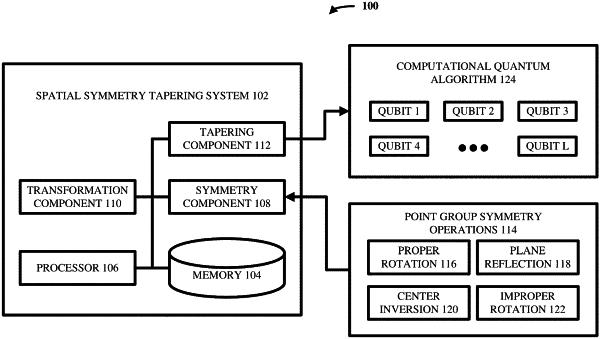| CPC G16C 10/00 (2019.02) [G06F 17/16 (2013.01); G06N 10/00 (2019.01)] | 20 Claims |

|
1. A system, comprising:
a memory that stores computer-executable components; and
a processor, operably coupled to the memory, that executes the computer-executable components stored in the memory, wherein the processor;
obtains a computational quantum algorithm that models properties of the molecule, wherein the computational quantum algorithm is employable for simulating the molecule at a defined precision using a first number of qubits of a quantum device;
identifies a spatial point group symmetry operation associated with the molecule;
generates a unitary matrix that corresponds to the spatial point group symmetry operation;
generates a Hermitian matrix based on the unitary matrix;
generates a diagonalized second quantization representation of the spatial point group symmetry operation based on the Hermitian matrix converts the diagonalized second quantization representation into a single Pauli string;
tapers the computational quantum algorithm based on the single Pauli string, wherein the tapered computational quantum algorithm is employable for simulating the molecule at the defined precision using a second number of qubits of the quantum device that is less than the first number of qubits; and
simulates, using the tapered computational quantum algorithm with the second number of qubits of the quantum device, the molecule.
|